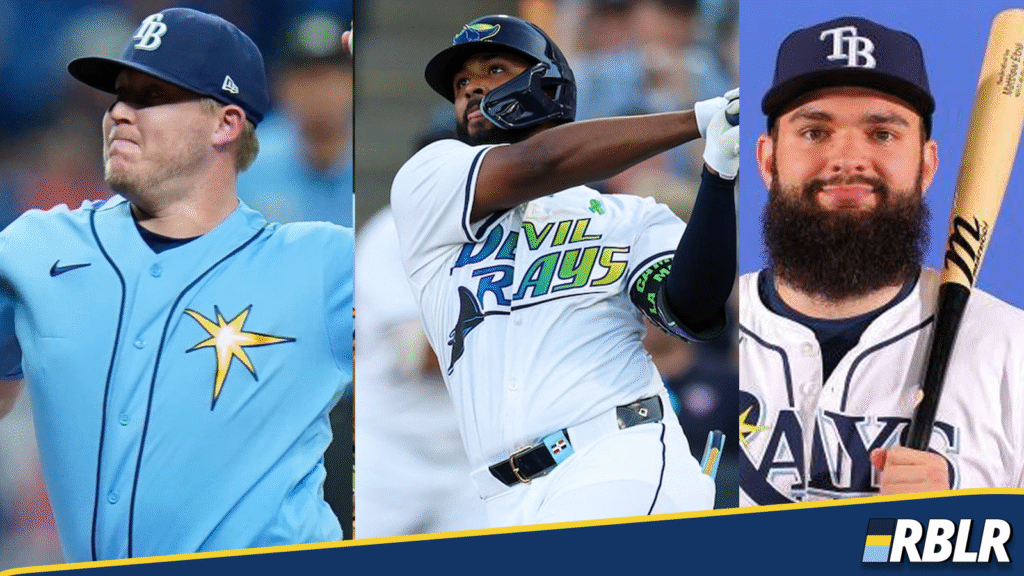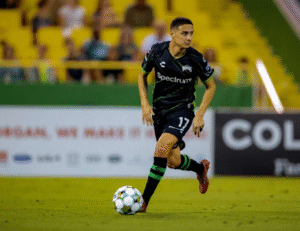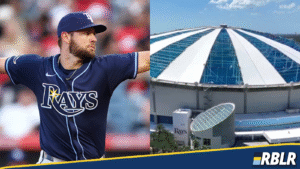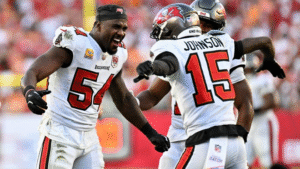RBLR Roundtable #15 – On The Farm, In The Stable, & Now In The Toolbox

This week our writers checked-in on a couple prospects, found stability in an ever-changing bullpen, and took a new tool on Savant for a test drive.
Jacob Macauley (@raysfarmreport) : Johnson and Etzel check-in
In my 7th roundtable submission, I highlighted two prospects to watch heading into the season: SP Marcus Johnson and OF Matthew Etzel.
It’s been a mixed bag of results thus far for Johnson. On a positive note, he has sustained his strike-throwing ways this season – running a 2.0 BB% (which leads the entire minor leagues on a minimum 40 IP). Johnson is getting torched with long balls this season, surrendering a 17.4 HR/FB%. This could be a result of him allowing a career high pull rate of 54.2%. Overall, you’d like to see better results from a 24-year-old in A+, but his plus 19.8 K-BB% will always keep me a believer.
Matthew Etzel has made some nice improvements in year two with the Rays. Etzel has increased his contact rate (up to 72.9%) in comparison to when he joined the Rays last season, and that has resulted in an improved-although-not-great 30.5 K%.
A pretty remarkable area of regression for Etzel is the fact that his FB% has plummeted 14.3%, and his GB% has spiked 20.7%, so this is an area to monitor moving forward. Overall, it has been a pretty successful start for Etzel as he runs a 108 wRC+ in a not-hitter-friendly Southern League.
I’m hoping Etzel can get back to last season’s 43.6 FB% to maximize his unique power speed skillset that he provides. In my opinion, these are still two of the more talented Rays prospects, and I’m still betting on them to have long-term success.
Dustin Teuton (u/FLBoy19) : Consistent Cleavinger
Of all the pitching injuries during the Rays’ 2023 season, personally the one that hit hardest was Garrett Cleavinger’s ACL tear on May 7th. He had been a steady bullpen presence – far more reliable, in my eyes, than fellow lefties Jalen Beeks or Colin Poche.
But more than that, Cleavinger felt like the quintessential Tampa Bay Ray: a pitcher who took a winding seven-year path to a full-time MLB role, was traded three times (including once for Jeremy Hellickson going from Baltimore to Philadelphia), and finally arrived in a 2022 deadline deal for a no-name minor leaguer. Since then, he’s been a solid to great reliever. In 2025, he’s arguably been the Rays’ most valuable bullpen arm.
Cleavinger has always possessed a strong pitch mix. While pitch modeling tools like Stuff+ can struggle with starters, they can be helpful at evaluating relievers. Cleavinger’s arsenal grades as average or better, with his two-seam bordering on plus and slider almost double-plus.
He’s historically been a volatile performer, with 2024 highlighting that inconsistency: a dominant May was undone by a rough June, with average months bookending the extremes. But Cleavinger has found consistency so far this year. Through two months, he has a 1.89 ERA and 2.94 xFIP. While his BABIP and strand rate suggest some regression could be coming, his improved strikeout and walk rates paint a more optimistic picture. He’s upped his strikeout rate by 5.6% and cut his walk rate by 6.1%, resulting in a stellar 27.8% K-BB rate -13th best in baseball among RP with at least 10 innings at the time of writing this.
If he maintains his control, Cleavinger could anchor a dominant left-handed tandem with Mason Montgomery and provide the Rays a reliable bridge to the ninth for Pete Fairbanks. For a bullpen constantly shifting so far this season, Garrett Cleavinger has been able to be the stabilizing force it desperately needs.
Jake Shutters (@JakeShutters) : Looking at Caminero’s swing with a new tool on Savant
Savant released some new data to the public focused on swing path and attack angle. Attack angle is the angle in which the bat is heading as it makes contact with the baseball. For reference, Savant identifies an “ideal” attack angle as between 5 and 20 degrees. Understanding attack angle is crucial in our understanding of what truly generates home run power and can explain why a player whose average exit velocity is 86.7 MPH (Isaac Paredes) has hit more home runs than EV monsters like Oneil Cruz, Junior Caminero, and others.
Speaking of Caminero, with his elite bat speed (ranked 2nd in average bat speed among qualified hitters, only behind the aforementioned Cruz), why hasn’t he been able to show off the power potential on a more consistent basis in the majors thus far?
He’s not striking out too much (20.1 K%) and he hits the ball hard (91.3mph average EV with a 50% hardhit rate), so what seems to be the problem? His ground ball output.
Caminero not only leads the majors grounding into double plays (a brutal 15), but he has the 9th highest ground ball rate at 53.5%. He has close splits between fly balls, ground balls, and line drives to Yandy Diaz – as they all lie within roughly 2% from each other. Yandy uses the whole field much more than Caminero does which allows him to get hits at a higher rate.
Statcast’s new feature allows us to look under the hood at the mechanical reasoning for Caminero’s ground ball struggles better than ever before as we can analyze his swing to determine some sort of a reasoning for these issues. Caminero has a 5 degree average attack angle. This is 5 degrees below the league average of 10 degrees. Essentially, Caminero’s swing tilt is flatter than the average player, which could be causing him to not be able to get under the ball (and subsequently, hit home runs) as easily as a player like Isaac Paredes – who hits the ball much softer, but has a higher HR output so far due to his 14 degree attack angle. To unlock his full potential, Caminero needs to make an adjustment that many talented big leaguers have had to make in the past. Whether that’s through pitch selection, mechanics, or anything else, advances in public data will allow us to see these adjustments in action.
The RBLR Rays Roundtable is a weekly collection of analysis, insight, and perspectives from a cast of writers assembled because of their unique backgrounds and experience. Check this space weekly for new updates and features covering the Tampa Bay Rays, the Rays’ minor league prospects, and more!







